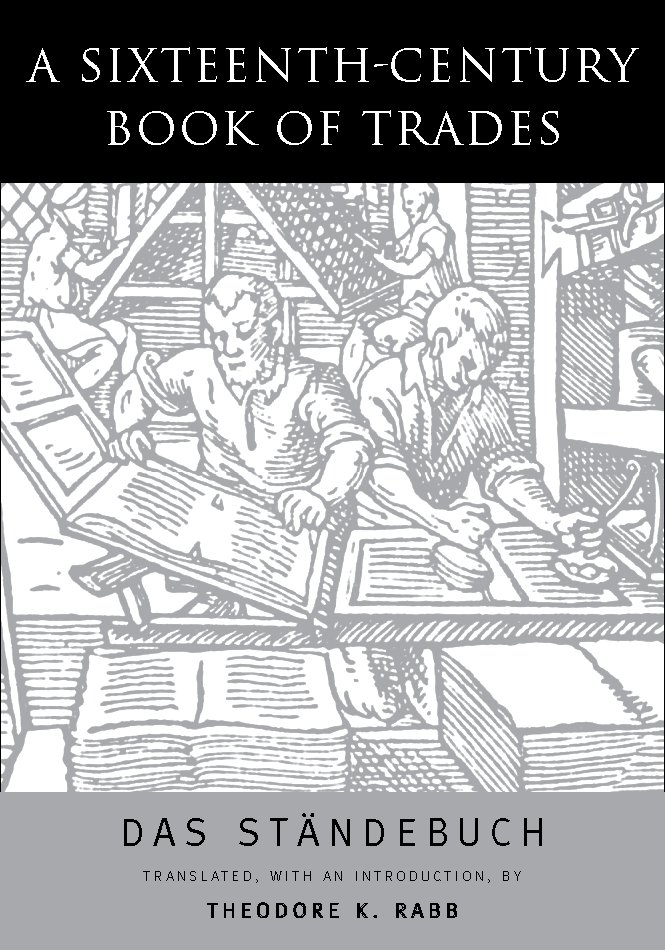
![]()
This extraordinary book of verses by Hans Sachs and engravings by Jost Amman offers a vivid portrait of city life in Renaissance Germany. Covering 114 ranks (such as The King) and trades (ranging from The Goldsmith to the Thimble Maker), it provides a unique cross-section of the daily life and social attitudes of sixteenth-century city dwellers. Through words and pictures, the reader can experience at first hand one of the earliest proclamations of the small-town outlook that was to be an essential part of European culture for centuries. Mixing popular attitudes, such as the contempt for lawyers, Jews, and beggars, with precise descriptions of occupations that range from clockmaking to fishing, the book is a gold mine of insights into the society, values, and technology of the age. Its details, such as the ordeal of dentistry or the contents of a locksmith's shop, open a direct window into the distant past. With its emphasis on hard work, its disdain for mere money-making or sloth, its neglect of rural occupations, and its minimizing of the role of women, the book also reflects the basic outlook of urban life during this period of rapid religious, economic, and political change. By commissioning so ambitious an undertaking by a poet and an artist famous in their own day, the publisher, Sigmund Feyerabend, himself a leading figure in the book trade, was launching what turned out to be a remarkable pioneering venture: a highly original social survey that was to become a model for countless imitators. The book’s complex publication history, as well as the implications of its contents, are discussed in the Introduction by Professor Rabb, who has also produced the first complete translation into modern English doggerel of the doggerel verse for which Sachs was famous.
Praise for the book:
"Theodore Rabb has put into lively, accurate English the most important sixteenth-century German text on social structures. Its neat pairing of Jost Amman's images with Hans Sachs's texts illustrates the shift from medieval normative social ideas to purely descriptive ones and reveals how Protestant writers marginalized the medieval idea of a separate clerical hierarchy. This volume is a most welcome addition to our library of sixteenth-century German sources in English."
—Thomas Brady, Peder Sather Professor of History, University of California at Berkeley
"In its totality, Das Ständebuch offers a visually appealing snapshot of early modern German society accompanied by witty and literate commentary. . . . The decision to recast the original verse into English metric is a felicitous one since it gives readers a feel for the pleasure of the original. A delight to read."
—Paula Findlen, Professor of History, Stanford University
"Professor Rabb's introduction combines wide learning and clear prose, enabling modern readers to look at this pathbreaking book through the eyes of the Reformation burgher society into which it was born."
—Paul Needham, Scheide Librarian, Princeton University
Theodore K. Rabb is Emeritus Professor of History, Princeton University, and lives in Princeton, NJ. Though he also taught at Stanford, Northwestern, Harvard, and Johns Hopkins Universities, his career was spent mainly at Princeton, where, following a BA from Oxford in 1958, he earned his PhD in 1961. He taught in Princeton’s History Department from 1967 until his retirement in 2006. His publications include The Struggle for Stability in Early Modern Europe (Oxford, 1972); Renaissance Lives (Pantheon, 1993; Basic, 2000), and The Last Days of the Renaissance and the March to Modernity (Basic, 2006). His very first publication, nearly fifty years ago, was a study of Sebastian Brant, Johann Grüninger, and the preparation of the first illustrated edition of Virgil; this volume therefore marks his return to the world of book publication in Germany in the sixteenth century.
272 pages. 115 illustrations. 2009.
ISBN 0-930664-28-2